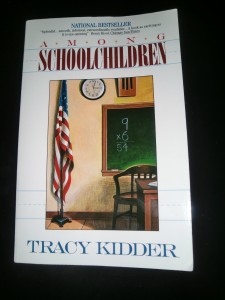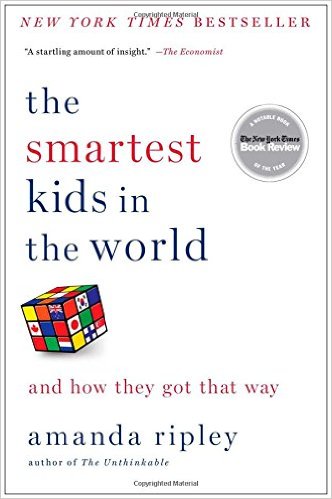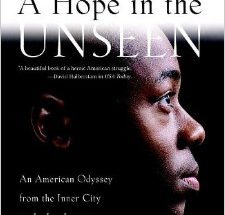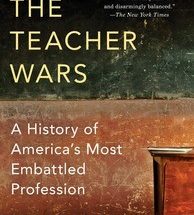
Chris Zajac is the accidental heroine in Tracy Kidder’s nonfiction account of one year in a fifth grade classroom.
In the late 1980s, Kidder spent all but two school days of one academic year in Zajac’s fifth grade classroom in Holyoke, Mass., to gather material for his book, Among Schoolchildren. He accompanied her at home, to church, and on a vacation to Puerto Rico. Thus, he was able to write passages that take the reader into Zajac’s mind, and make reading Kidder’s book akin to being immersed in a novel.
Kidder describes the challenges of teaching roughly 20 children from various backgrounds, many of them recent immigrants from low and working class families. What’s especially impressive is the way Zajac personally cares about every student in the class.
There is the sad story of Clarence, a boy with whom Zajac quickly builds a personal connection. He is a difficult student who constantly interrupts and demands his teacher’s attention. Over the course of the year, his episodes become more violent, and Kidder chronicles them all. He shows how the trouble affects Zajac — how she searches for ways to get Clarence to do his homework, how angry she is at herself for not being gentler with him after another afternoon of detention, and how she starts waking up in the middle of the night thinking about ways of dealing with him.
The climax of that story is reached when, after a “core evaluation” by psychologists and school officials, it is decided that Clarence has to leave Zajac’s class to join a class designed specifically for troublemakers. Kidder captures Zajac’s torn emotional reaction as if he could look into her head. On the one hand, she doesn’t want to give up on him, on the other hand, she wants what’s best for her class, and Clarence’s constant outbursts hurt the other children’s ability to learn. As Kidder writes, Zajac “had one awful, sinking fear. Had she wanted, deep down, to get rid of Clarence?”
Clarence’s is just one of many stories in the book. There is also Judith, an exceptionally smart girl, whose presence alone sometimes helps Zajac through rough days. There are descriptions of lessons, parent meetings, a field day and a science fair, and conversations with Zajac’s former teacher, her mother, a former student, and of course the children in her classroom.
Among Schoolchildren provides a rare glance into a classroom, and although it’s a classroom in the late 1980s, many of the problems remain the same. One of Kidder’s main points is how isolated a teacher is in her own classroom. Because of this isolation, the main perspective throughout the book is Zajac, and what she thinks about herself and her students.
Kidder makes her his heroine, which was a wise choice. Still, it may have been interesting to get an outside perspective on her teaching, a luxury teachers are denied.
As Kidder writes, “Sometimes she felt very lonely. ‘The worst thing about it,’ she once said, ‘is you don’t even know if you’re doing something wrong.’”



